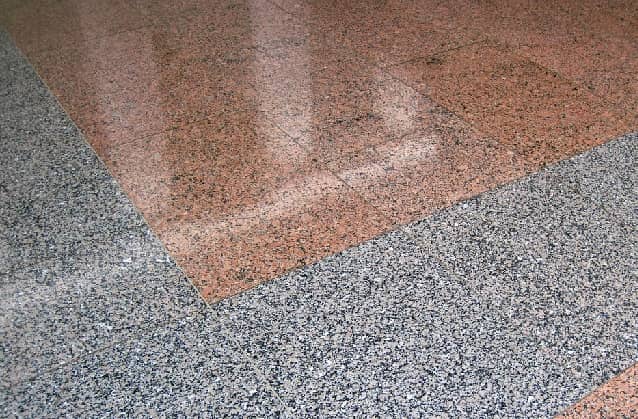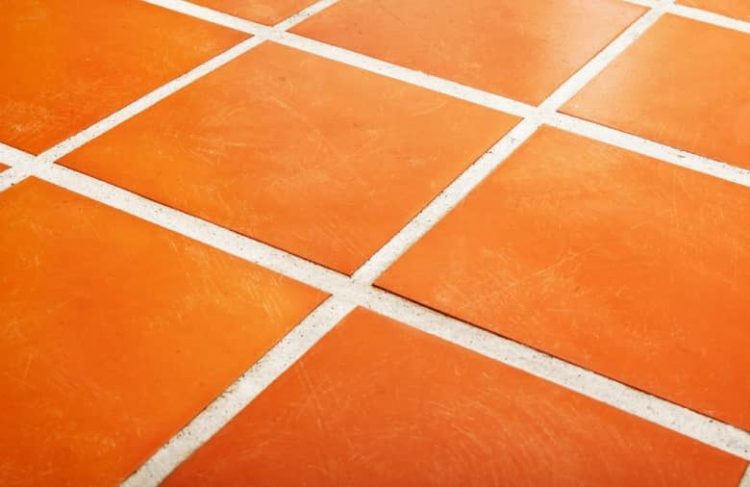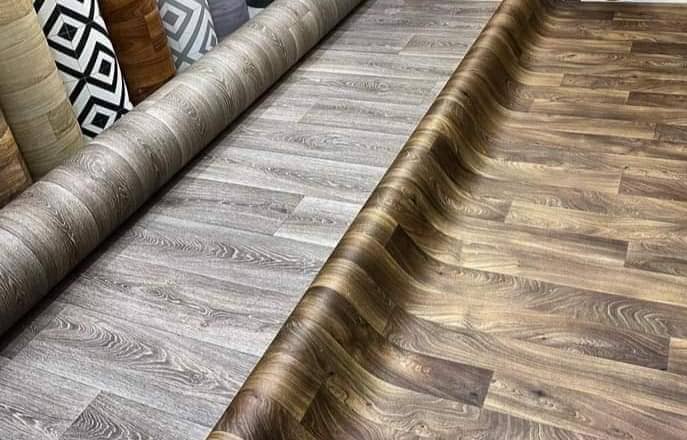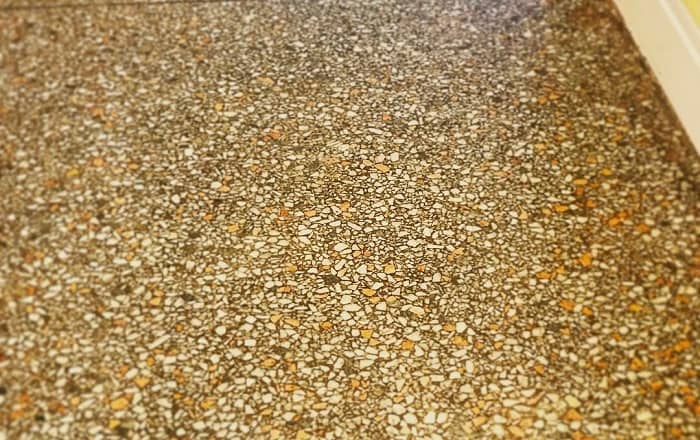Mud Flooring
Dirt, raw soil, or other unworked ground materials are used to create earthen flooring, Mud flooring is also known as Adobe flooring. It is commonly made of a mixture of sand, clay, and finely chopped straw in modern times. Mud flooring is often used in villages, where the qualities of the soil are improved by altering the composition of the soil by adding appropriate stabilizers. The soil’s tensile and shear strength are improved and shrinking is minimized.

Mud Flooring
If the flooring is well-done, it improves the house’s aesthetic appeal. Mud flooring is a sort of natural flooring. Mud has always been the most straightforward material for building construction.
Advantages of Mud Flooring
Mud flooring has the following advantages:
- It is inexpensive and durable.
- It’s simple to put together. It does not necessitate the use of specialized workers.
- It offers excellent thermal insulation. It is chilly in the summer and warm in the winter.
- It is safe for the environment.
- It is resistant to fire.
- It is completely silent.
- Mud flooring’s sole drawback is that it is not moisture resistant.
Disadvantages of Mud Flooring
Mud flooring has the following major disadvantages
- Maintenance: A thin cement cow-dung wash (1:12 to 1:3) is applied to the mud floor once or twice a week to keep it clean.
- It is unsuitable for modern structures.
Suitability of Mud Flooring
- Mud flooring is simple to maintain, stays warm in the winter and cool in the summer, and is thus ideal for areas where the temperature fluctuates dramatically over these seasons.
- These floors are not produced in business or professional structures, but only in rural homes where the cheapest and most convenient alternative is chosen.
Also Read: Procedure of Mud Flooring
Wooden flooring
Wood flooring refers to any product made of wood that is intended for use as flooring, whether structurally or aesthetically. Wood is a popular flooring option, and it comes in a variety of designs, colors, cuts, and species. Bamboo flooring is sometimes is taken for wood flooring, even though it is made of grass (bamboo) rather than wood.

Wooden flooring
Advantages of Wooden Flooring
- Easy maintenance, durability, and a wide range of styles are some of the advantages of wood flooring.
- Pet hair and dander are easily removed from wood floors, making them much simpler to maintain than carpet. They are extremely long-lasting, and with appropriate maintenance, they will continue to look wonderful for many years.
- From solid hardwood to engineered hardwood to bamboo, wood flooring is available in a range of designs and materials. Wooden flooring is available in different colors.
- Wood floors are not only beautiful, but they are also quite durable, making them ideal for households with dogs and children.
Marble Flooring
Marble is a metamorphic rock that can take on a variety of forms and names. Construction marble is used to make countertops, backsplashes, islands, and floors, among other things. Construction marble will be utilized in any marble used in the interior design of a residence, notably flooring.

Marble Flooring
- The composition distinguishes building marble from other varieties of marble and the rock itself. Calcite and dolomite, or serpentine, are used to make construction marble. Now, one would question why these matters; after all, marble is marble, but the logic for this sort of marble is that it is the most appealing in terms of aesthetics.
- Because it is made up of these minerals, it can be polished to provide the homeowner a sleek, glossy surface for a beautiful home screen.
Advantages of Marble Flooring
- Marble floors are beautiful; they exude elegance and refinement. Marble has always been associated with wealth and elegance, and it has been utilized by royalty as well as low-cost structures. Marble comes in a variety of hues and tints.
- The beauty is only heightened by its translucency, which allows light to shine through and make the floors sparkle. This, along with the fact that marble is a natural stone, ensures that no two pieces are similar.
- In addition to the appearance aspects of marble, it is also an extremely dense stone that can take quite a bit of traffic. This will make it a very good choice for a high-traffic kitchen.
Disadvantages of Marble Flooring
Marble is a natural stone and while that brings its beauty and unique qualities it also makes it susceptible to scratches, stains and can become slippery when using agents to counteract that.
Brick Flooring
Brick flooring is one of the many types of floors with a brick overlay. These are simple to create and maintain, but the final surface is not smooth and is rough, allowing moisture to easily absorb and hold wetness, perhaps causing dampness in the structure.

Brick Flooring
Suitability of Brick flooring
The flooring is appropriate for use in stores, warehouses, and other similar establishments.
Stone Flooring
Many various types of stone floorings may be installed; here are a few examples.
1. Kota Stone Flooring
Kota Stone is a fine-grained limestone mined in the Rajasthani region of Kota. There are hundreds of mines in or near Ramganj Mandi in the Kota district.

Kota Stone Flooring
The appeal of this stone is due to its greenish-blue and brown hues. Black, pink, grey, and beige are some of the other hues available. The stone is mostly utilized for exteriors in construction, although it may also be used for interiors.
2. Granite Flooring
As lava cools underground, granite is formed. It is made up of different minerals, such as feldspar and quartz, and has a granular texture and composition. Granite is a hard-edged stone with a beautiful natural texture. Because of its high resiliency, it may be used both indoors and outdoors.

Granite Flooring
Granite is recognized as one of the toughest forms of stone, which is why it is commonly used in kitchens. Granite’s strength also comes with a disadvantage: because it is incredibly hard, it demands that the subflooring be fully leveled before it can be put as stone flooring.
Granite comes in a variety of hues, including black, green, pearl, and galaxy.
Granite Flooring Benefits
- Granite may be utilized on severely laden floors because of its strong texture.
- Normal wear and tear may be tolerated by granite floors.
- The property’s worth is increased by its great properties and endurance.
Granite Flooring’s Drawbacks
- Granite flooring requires adequate support. Granite tiles can quickly break if there are any tiny alleyways or bumps on the subflooring.
3. Sandstone Flooring
Sandstone is a lovely natural floor covering that is well-known for its unique design. The golds, reds, browns, and tans of this often-multicolored stone, which mimic the look of beach and desert sand, may lend the ideal decorative touch to a space.

Sandstone Flooring
However, because it is natural, its characteristics are not under the control of a manufacturer, which might pose issues when utilized in specific situations.
Advantages of Sandstone Flooring
- It’s easy to describe the benefits of sandstone flooring but seeing a stunning sandstone tile installation in person says it all.
Disadvantages of Sandstone Flooring
- Absorption of water
- Scratches
- When wet, it becomes slick.
- Staining
- The passage of time has taken its toll.
Tile Flooring
Tile floor refers to a floor with a tile topping. The quality, color, form, and thickness of the tiles used may be whatever you like.

Tile Flooring
Tile flooring is made in the following way:
- The base course for a tile floor is prepared in the same way that the base course for brick flooring is produced. With the aid of screed battens, a thin coating of lime or cement mortar is placed over the prepared foundation course.
- The screeds are then leveled and secured at the right height. The required tiles are put on a 6 mm thick bed of wet cement mortar once the surface mortar has cured enough. (1:5).
- The excess mortar that leaks out of the joints is removed. The joints are scraped with a carborundum stone for 3 days to polish the surface, especially the edges.
Suitability of Tile Flooring
These floorings are utilized to pave building courtyards. Glazed tile flooring is utilized in modern structures to provide a high-end look.
Also Read: Types of Tiles
Cement Concrete Flooring
Cement concrete flooring, also known as conglomerate flooring, is a form of the floor with a cement concrete surface. These floors are made up of a 2.5 cm to 5 cm thick concrete layer on top of a 10 cm thick foundation concrete and a 10 cm thick, clean sand layer over the ground that has been compacted and consolidated. This kind of flooring is very popular nowadays.

Cement Concrete Flooring
Types of cement concrete floors
- Floor finish that is neither monolithic nor glued.
- The floor finish is monolithic.
Advantages of Cement Concrete Flooring
Concrete flooring provides the following advantages:
- They are tough and long-lasting.
- Provide a non-absorbent, smooth surface.
- They have higher fire resistance.
- They provide better hygienic surfaces since they are readily wiped and washed.
- They are cost-effective since they require little upkeep.
- They have the potential to be completed beautifully.
Also Read: What is Skirting Tiles
Linoleum Flooring
Depending on the brand, linoleum is available in two different forms. Sheet linoleum is the most popular type, although tiles are also available, they are mostly used in business settings. While sheet vinyl and sheet linoleum have a lot in common in terms of installation, contemporary linoleum is far more difficult.

Linoleum Flooring
You’ll need a roller that weighs more than 100 pounds to install Forbo and most types of linoleum. They aren’t difficult to use, but you’re probably better off hiring a pro if you add in adhesives, equipment rental costs, and time.
Advantages of Linoleum Flooring
- Resiliency
- Water-resistance
- Eco-friendly
- Low maintenance
Disadvantages of Linoleum Flooring
- Limited Selection
- Discoloration
- Expensive
Terrazzo Flooring or Mosaic Flooring
- Terrazzo is a composite building material created by mixing aggregate pieces like marble or stone with concrete or epoxy resin.
- Terrazzo may be used both indoors and outdoors, depending on the materials utilized.
- Terrazzo can be poured (like concrete) in place (i.e., in your home) or terrazzo tiles can be used instead.

Terrazzo Flooring or Mosaic Flooring
- Terrazzo tiles are also available, either as monochromatic blocks or as encaustic cement variants like these.
Advantages of Terrazzo Flooring
- Attractiveness
- Cool on the cutting edge
- Customizable indefinitely
- Versatility
- Friendly to underfloor heating
- Healthy
- Maintenance is simple.
- Friendly to the environment
- Durable
Disadvantages of Terrazzo Flooring
- Beware of trends
- Cracks
- Costs that are both cold and harsh
Bamboo Flooring
A bamboo floor is a form of flooring that is made from bamboo. Most of today’s bamboo flooring comes from China and other Asian countries. Mosso bamboo is the most utilized species for flooring. Floor made of bamboo Another advantage of bamboo flooring is that it is less vulnerable to moisture damage than hardwood flooring.

Bamboo Flooring
Bamboo flooring has dimensional stability and is less prone than hardwood to cup, warp, or gap since it is a laminated product. Insect resistance, spill resistance, and affordability are all benefits worth noting.
Also Read: Why Bamboo is Used as a Building Material?
Types of Bamboo Flooring
- Engineered Bamboo
- Teragren Bamboo
- Carbonized Bamboo Flooring
- Strand Woven Bamboo
- Solid Bamboo
Bamboo Flooring’s Advantages
Bamboo flooring provides a lot of advantages over traditional hardwood floors. Bamboo, for the most part, provides homes with gorgeous aesthetics, cheaper material costs, easier installation, and environmental advantages. Let’s look at some of the advantages of bamboo flooring.
- Strength and Durability in the Face of Water and Stain
- Bamboo is an inexpensive material.
- Installation is simple.
- Friendly to Bugs
Also Read: Complete Guide on White Cement


[…] India, there are a lot of options for natural stone flooring. As you know, Indian Marble stones are one of the most famous natural stones. That is why Marble […]